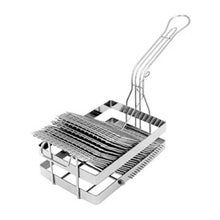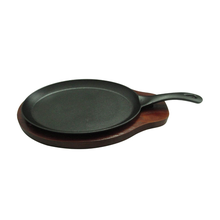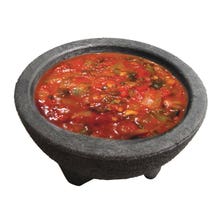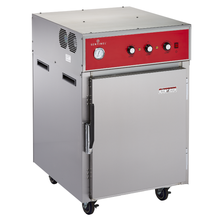How to Successfully Launch a Hispanic Restaurant: A Comprehensive Guide
By: Matthew Berry • Feb. 21, 2023 • 16 minute read time
How to Successfully Launch a Hispanic Restaurant: A Comprehensive Guide
Opening up a Mexican or Hispanic restaurant can be exciting, but it requires careful planning and consideration to ensure success. Here are some important things to think about before starting:
- Market research—Conduct thorough market research to identify your target market, understand their needs and preferences, and analyze your competition. This information will help you create a unique environment that sets your restaurant apart.
- Location—Choose a site that is easily accessible, visible, and has high foot traffic. Look for areas that attract a diverse clientele.
- Licensing and permits—Obtain all necessary licenses and permits to operate a restaurant in your area. This includes food handling, alcohol serving, and zoning permits.
- Concept and menu—Develop a concept that accurately reflects the Hispanic culture and cuisine you want to showcase. Create an authentic, diverse menu that offers options for different dietary requirements.
Considering these important factors, you can increase your chances of success and create a successful Hispanic restaurant.
Of course, don't forget to consider these critical pieces.
- Staffing—Hire a team knowledgeable about Hispanic cuisine and culture. Ensure that your staff is diverse and represents the community you are serving.
- Marketing and promotion—Develop a marketing plan that targets your desired audience and promotes your restaurant's unique aspects. Use social media, local advertising, and community events to increase awareness of your restaurant.
- Financial planning—Create a realistic budget that includes startup costs, ongoing expenses, and projected revenue. Consider factors such as purchasing new equipment, rent, utilities, payroll, and inventory management.
How do you do Market Research for a Mexican Restaurant?
Market research is an essential step in opening a Mexican restaurant. Here are some specific types of market research you should consider conducting:
- Demographic research—Research the demographics of the area where you plan to open your restaurant. Consider factors such as the size of the Mexican population (and specific nationalities), age groups, income levels, and education levels.
- Competitive research—Identify other Mexican restaurants in the area and research their menu, pricing, decor, and customer service. Evaluate their strengths and weaknesses and look for ways to differentiate your restaurant. Is there a specific nationality whose food isn't represented?
- Customer research—Conduct surveys or focus groups with potential customers to understand their preferences and needs. Ask questions about their favorite dishes, how often they eat out, and what they look for in a Hispanic restaurant.
- Location research—Research potential locations for your restaurant and consider factors such as accessibility, visibility, and foot traffic.
- Trends and industry research—Stay up-to-date with current trends in the Hispanic or Mexican restaurant industry, such as new ingredients, menu items, and dining experiences. Also, research any regulations or laws specific to operating a restaurant in your area.
You can better understand your target market and position your Mexican restaurant for success by conducting thorough market research.
Tips for finding the right location for your restaurant
Finding the best location for your Mexican restaurant is crucial to its success. Here are some things to consider when selecting a location:
- Demographics—Look for a location with customers who are more likely to be interested in your cuisine.
- Visibility—Look for a location that is highly visible and easy to access. Consider a location on a busy street or in a shopping center. Make sure your restaurant is easily identifiable from the road.
- Foot traffic—Find a location with high foot traffic, such as a busy commercial area near a popular tourist destination or a university campus.
- Parking—Consider whether there is ample parking available near your restaurant. Customers are more likely to visit your restaurant if they can easily find a parking place.
- Competition—Look for a location not already saturated with Mexican restaurants. Competition can be good for business, but too much can make it difficult to stand out.
- Cost—Look for a location that fits your budget. When evaluating potential locations, consider the cost of rent, utilities, and other expenses.
Consider these factors when selecting a location, and you can increase your chances of finding the ideal location for your Mexican restaurant.
Apply for licenses and permits to open your hispanic restaurant
The types of licenses and permits you'll need to open a Hispanic restaurant depend on your location. While the process can be complex, we've listed some of the most common licenses and permits below. Be sure to consult with your local health department and government entities or a local business attorney to make sure you have everything you need to operate safely and legally.
Getting the proper licensing and permits is an important step in opening a Hispanic restaurant. Here are the most important things to know about licensing and permits:
- Business license—You will need a business license to operate a restaurant. This license is issued by the city or county where the restaurant is located. You will need to provide information about the business, including the type of business, ownership structure, and location.
- Food service permit—To prepare and serve food, you need a food service permit issued by the local health department. This permit requires an inspection of the restaurant's kitchen and food preparation areas.
- Alcohol license—If you plan to serve alcohol, you will need an alcohol license. This license is issued by the state and requires at least an application, background check, and payment of a fee.
- Zoning permit—You will need a permit to ensure your restaurant complies with local zoning laws. This permit is issued by the local zoning board and requires information about the restaurant's location, size, and intended use.
- Building permit—If you plan to modify the building or space, you will need a building permit. This permit is issued by the local building department and requires plans and specifications for the proposed modifications.
- Fire department permit—You may need a permit from the local fire department to ensure that your restaurant complies with fire safety codes. This may include inspections of fire suppression systems, fire alarms, and emergency exits.
Understanding your Hispanic restaurant's licensing and permit requirements can ensure that your business complies with local laws and regulations. Research the specific requirements in your area and work with local officials to obtain the necessary permits and licenses.
Creating the right menu for your Hispanic restaurant
Creating a menu is one of the most important aspects of opening a Hispanic restaurant. Here are some things to consider when making a menu:
- Authenticity—Offer authentic Hispanic dishes that reflect the culture and cuisine. Research traditional recipes and cooking techniques to create an authentic and delicious menu. Decide if you'll specialize in one specific nationality, such as Mexican, Ecuadorian, Columbian, Guatemalan, or Peruvian.
- Variety—Offer a range of dishes that appeal to different tastes and dietary requirements. Consider vegetarian, vegan, and gluten-free options, as well as mild, spicy, or savory dishes.
- Pricing—Set competitive prices with other restaurants in the area while allowing for a reasonable profit margin. To attract customers, consider offering specials or deals.
- Ingredients—Use high-quality, fresh ingredients to create flavorful dishes. Consider sourcing ingredients locally and using seasonal produce when possible.
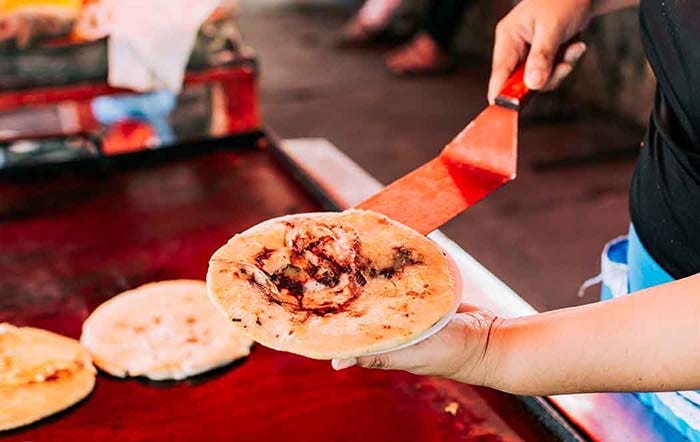

- Presentation—Consider how the dishes will be presented on the plate. Use colorful, fresh ingredients to create visually appealing and appetizing dishes.
- Customer feedback—Once you have a menu, consider getting feedback from potential customers through surveys or focus groups. Use this feedback to refine the menu and make any necessary changes.
- Branding—Consider how the menu fits into the overall branding of your restaurant. Use menu items to reinforce the theme and ambiance of your restaurant.
By considering these factors, you can create a menu that offers a range of authentic Hispanic dishes that appeal to a wide range of customers.
How to staff your Mexican restaurant for success
If you've ever been to a restaurant, experienced poor service, and thought, "I'm never going there again," you understand how critical it is to find and retain the best possible staff for your new Mexican restaurant. Hiring the best team is essential to the success of your business. Here are some tips on recruiting and hiring the best possible staff.
- Hiring process—Develop a clear hiring process that includes creating job descriptions, advertising job openings, reviewing resumes and applications, and conducting interviews. Consider factors such as experience, skills, and cultural knowledge when hiring.
- Staffing needs—Determine the number of staff needed to run the restaurant efficiently, including cooks, servers, hosts, bartenders, and managers. Consider factors like the size of the restaurant, the number of customers expected, and the hours of operation.
- Compensation—Offer competitive compensation packages that include wages, benefits, and incentives. Consider experience, performance, and industry standards when setting wages.
- Diversity and inclusivity—Foster a culture of diversity and inclusivity within your restaurant, and hire staff members from diverse backgrounds who can bring unique perspectives and experiences to the team. Encourage open communication and collaboration among staff members.
- Staff retention—Develop strategies to retain staff members, such as offering ongoing training and development opportunities, providing regular feedback and recognition, and creating a positive work environment.
- Legal requirements—Ensure your staffing practices comply with all relevant employment laws and regulations, including minimum wage, overtime, and anti-discrimination laws.
By considering these factors when staffing your Mexican restaurant, you can build a solid and diverse team that can provide exceptional service and contribute to the success of your business.


How do you market a Mexican or Hispanic restaurant?
Implementing a strong marketing strategy and plan is critical to the success of a new Mexican or Hispanic restaurant. Here are some steps to consider when developing your marketing plan:
- Define your target market—Identify the customers you want to attract to your restaurant. Consider factors such as age, income, location, and cultural background. Develop customer personas to help you understand your target audience and tailor your marketing efforts accordingly.
- Develop a brand identity—Develop a strong brand identity that reflects your restaurant's culture and cuisine. This can include a logo, color scheme, and messaging that differentiates your restaurant from competitors.
- Create a website—Create a website that showcases your restaurant's menu, location, hours of operation, and other important information. Make sure the website is mobile-friendly and optimized for search engines.
- Use social media—Promote your restaurant and engage with customers through social media platforms like Facebook and Instagram. Post photos of your food and restaurant, share promotions and specials and respond to customer inquiries and feedback.
- Offer promotions and discounts—Promotions and discounts will attract new customers and encourage repeat business. This can include specials for first-time customers, loyalty programs, and discounts for repeat visits.
- Host events—Hosting events like live music performances, cultural celebrations, and food festivals to attract customers and create buzz around your restaurant.
- Partner with local businesses—Local businesses such as hotels, tourism offices, and cultural organizations can help promote your restaurant to their customers and audiences.
- Monitor and analyze results—Monitor the effectiveness of your marketing efforts using tools like website analytics, social media metrics, and customer feedback. Use this information to refine your marketing strategy and plan.
Following these steps, you can develop a marketing strategy and plan that effectively promotes your Mexican or Hispanic restaurant and attracts customers. Remember to stay authentic to your brand and culture while exploring new marketing channels and tactics.
Financial Planning for new Hispanic restaurants
Now that you have your menu, location, and initial marketing strategy, let's think about financial planning and why it's crucial when opening a new Hispanic restaurant. Here are some important things to consider:
- Start-up costs—Calculate the start-up costs for your restaurant, including expenses such as rent, equipment, inventory, permits and licenses, and marketing. Create a detailed budget that accounts for all costs and projected revenue.
- Funding—Determine how you will finance your restaurant, whether through personal savings, loans, or investors. Research different funding options and their associated terms and interest rates to find the best option.
- Cash flow—Develop a cash flow plan that accounts for your revenue and expenses daily, weekly, and monthly. This will help you anticipate and manage any potential cash flow challenges.
- Pricing strategy—Create a pricing strategy that balances the cost of ingredients, labor, and other expenses with the prices customers are willing to pay. Conduct market research to understand pricing trends in your area and adjust your prices accordingly.
- Financial management—Hire a professional accountant or bookkeeper to manage your finances and ensure accurate bookkeeping and financial reporting. This will help you make informed decisions about your business and ensure compliance with tax and regulatory requirements.
- Contingency planning—Develop a contingency plan for unforeseen events such as emergencies, equipment failures, or supply chain disruptions. This can include setting aside funds in a contingency account or developing a plan to secure alternative funding sources.
- Forecasting—Use financial forecasting to project your revenue and expenses for the coming year, taking into account seasonal fluctuations and other trends in the market. Use these projections to guide your financial decision-making and adjust your strategy.
Considering these factors when developing your financial plan, you can set your Hispanic restaurant up for success and ensure long-term financial stability.
Share










